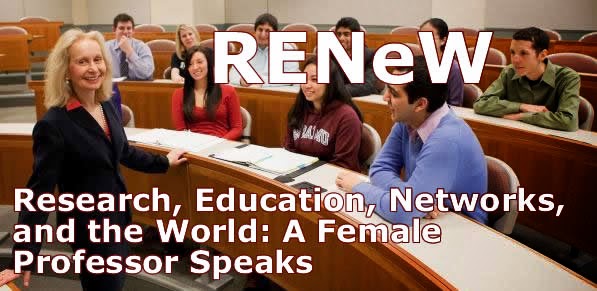 As a faculty member, at the end of a semester, I often have the wonderful experience of seeing how students have synthesized the course materials through their projects and presentations. I have the privilege of listening to student presentations in all the classes that I teach and it is always a highpoint of the semester.
As a faculty member, at the end of a semester, I often have the wonderful experience of seeing how students have synthesized the course materials through their projects and presentations. I have the privilege of listening to student presentations in all the classes that I teach and it is always a highpoint of the semester.My husband, Dr. Ladimer S. Nagurney, is also a faculty member but, unlike me, he is an expert in hardware and he is a professor of electric, computer, and biomedical engineering at the University of Hartford. This past semester, he taught a bioinstrumentation course and, in the graphic above, which he prepared, snapshots of his student presentations are captured.
I have been hearing about the great student projects and found them so impressive and timely that I wanted to write and comment about them.
The students in the class chose a biomedical instrument to research in depth. As part of their research, they created a presentation that highlighted the Physiology that led to the development of the instrument, the Physics behind the measurement, and the Clinical Use of the instrument.
Among the biomedical instruments that were delved into: a Blood Pressure Monitor, a Pacemaker, an Electronic Stethoscope, Magnetic Resonance Imaging (MRI), a Pulse Oximeter, an Ultrasound Machine, a CT Scanner, a Ventilator, a YAG Laser, Kidney Dialysis Equipment, a Continuous Blood Monitor, EMG/EKG data collection, a Defibrillator, an Angiogram, and even Radiosurgery and Radiotherapy Instruments.
I must say, I am impressed (and it takes a lot to impress me). What is also terrific is that the students learned from one another's presentations and they had a chance to develop their public speaking skills.
And, if you notice in the graphic above, there were quite a few females in the class (maybe there is hope for the future of females in engineering).
Nice to know that these senior year students (and some of them already have great jobs after graduation, whereas others are applying to grad school) will be prepared to develop biomedical instruments that can both save lives and create jobs in healthcare.

















